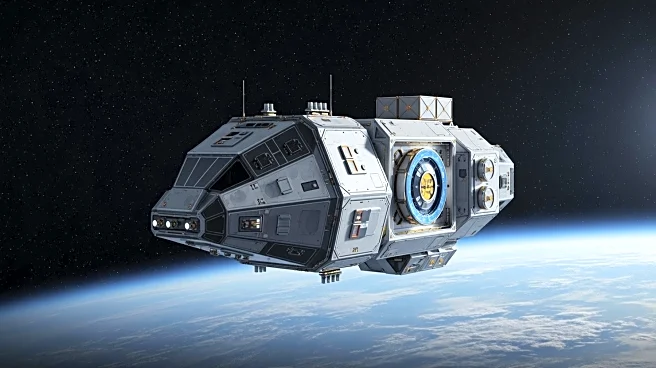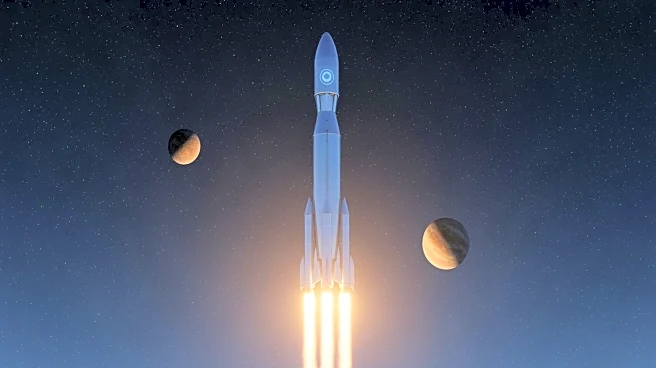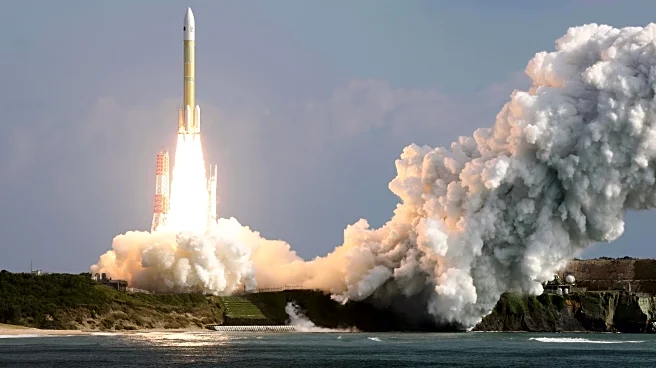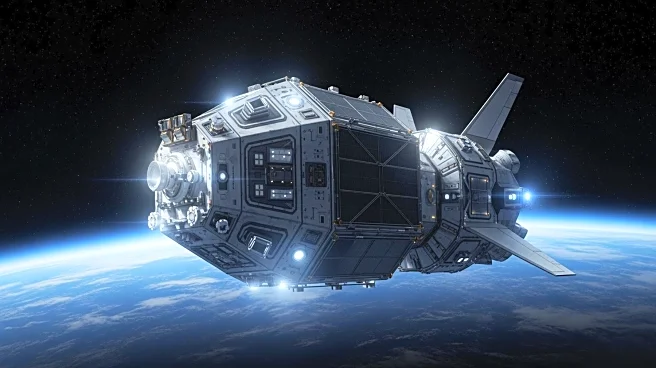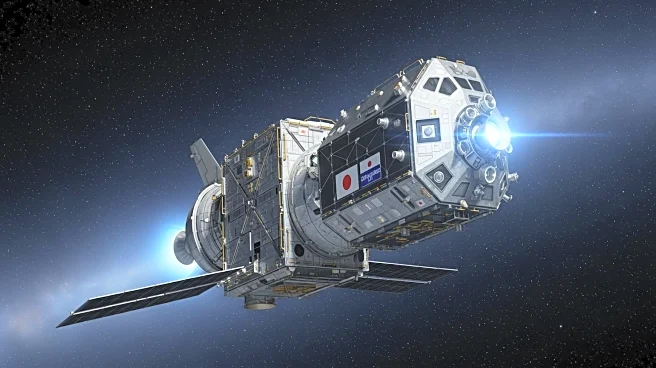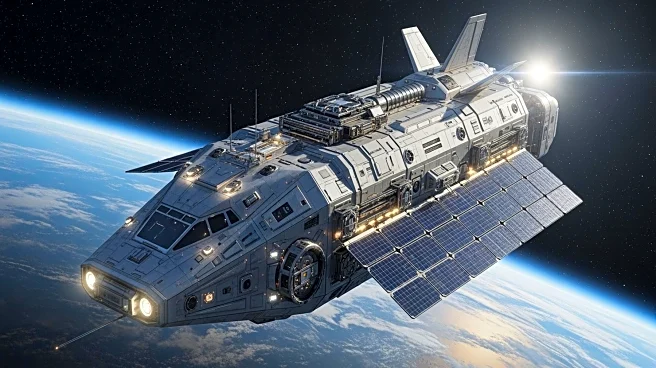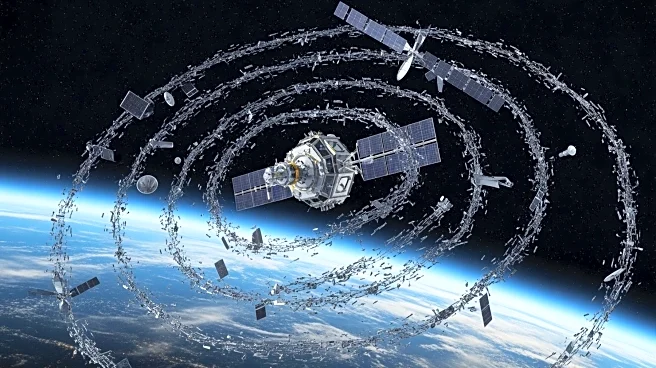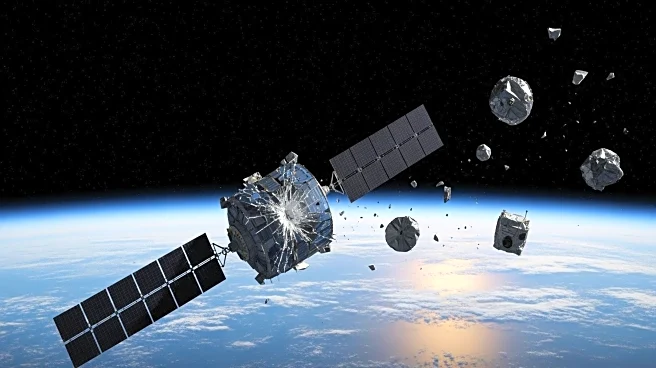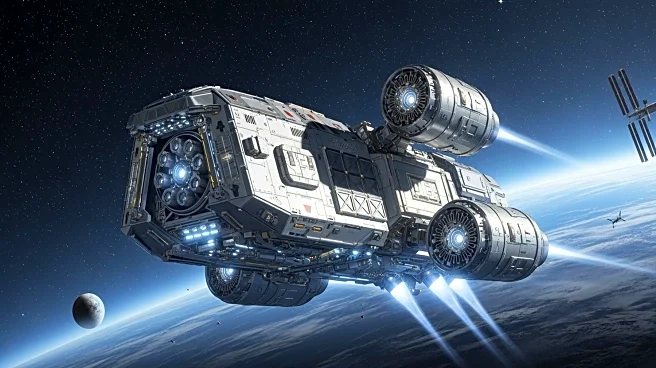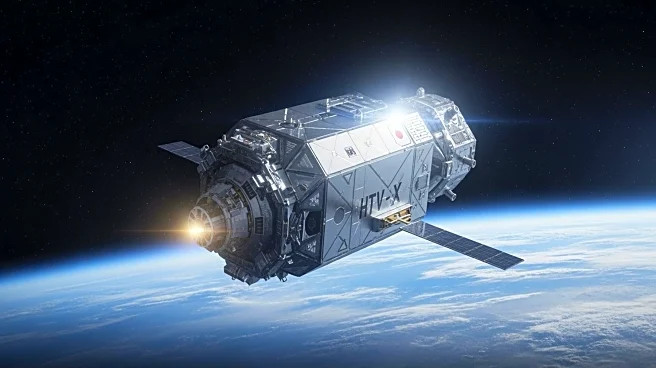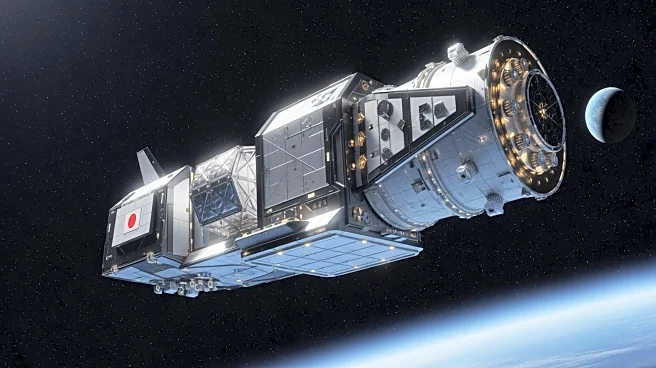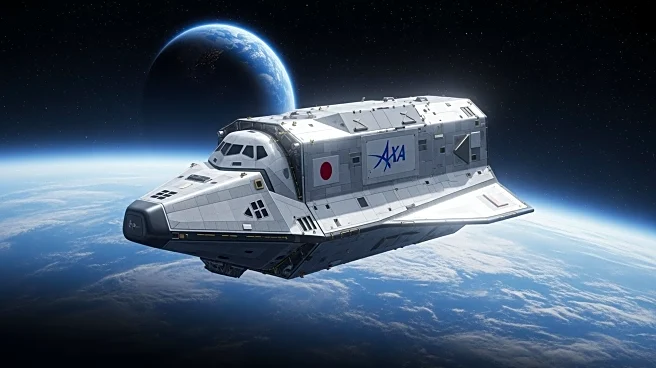What's Happening?
The Japan Aerospace Exploration Agency (JAXA) has launched its latest cargo vehicle, HTV-X, to the International Space Station (ISS) aboard an H3 rocket. The mission, named HTV-X1, is set to arrive at the ISS on Wednesday, where JAXA astronaut Kimiya
Yui will capture it using the Canadarm2 robotic arm. Developed in collaboration with Mitsubishi Heavy Industries, HTV-X is an upgraded version of JAXA's previous HTV model, known as Kounotori, which completed nine resupply missions to the ISS between 2009 and 2020. Despite being shorter than its predecessor, HTV-X maintains a similar payload capacity, capable of carrying 4,070 kg of pressurized cargo and 1,750 kg of unpressurized contents. The vehicle is equipped with solar arrays generating 1 kW of energy, supporting internal payloads and refrigeration units for perishable goods. HTV-X reduces the pre-launch cargo onboarding time from 80 hours to 24 hours, enhancing freshness. It can remain docked at the ISS for up to six months and continue orbiting for another 18 months to conduct experiments and demonstrations.
Why It's Important?
The launch of HTV-X marks a significant advancement in space logistics, providing more options for cargo delivery to the ISS and potentially other destinations. As the ISS approaches its decommissioning at the end of the decade, HTV-X's capabilities extend beyond the current orbital lab, with plans to serve future commercial low Earth orbit (LEO) destinations. This development aligns with JAXA's strategy to support the Gateway station in lunar orbit as part of NASA's Artemis campaign. The introduction of HTV-X enhances international collaboration in space exploration and supports scientific research by ensuring the timely delivery of essential supplies and experiments. The vehicle's ability to perform in-orbit experiments and technical demonstrations further contributes to the advancement of space technology and exploration.
What's Next?
JAXA and Mitsubishi Heavy Industries aim to expand HTV-X's role beyond the ISS, targeting future commercial destinations in LEO. The vehicle is expected to deliver cargo to the Gateway station, a key component of the Artemis campaign, which seeks to establish a sustainable human presence on the Moon. As the ISS nears decommissioning, HTV-X's versatility in serving various space missions will be crucial in maintaining continuous support for scientific research and exploration. The success of HTV-X could lead to increased demand for similar vehicles, fostering innovation and competition in the space logistics sector.
Beyond the Headlines
The development of HTV-X reflects broader trends in the commercialization of space, as agencies and companies seek to capitalize on emerging opportunities in LEO and beyond. The vehicle's ability to support long-duration missions and perform in-orbit demonstrations highlights the growing importance of versatile and reliable space logistics solutions. As international interest in lunar exploration and commercial space stations increases, HTV-X's capabilities may play a pivotal role in facilitating these endeavors, contributing to the long-term sustainability and expansion of human activities in space.
